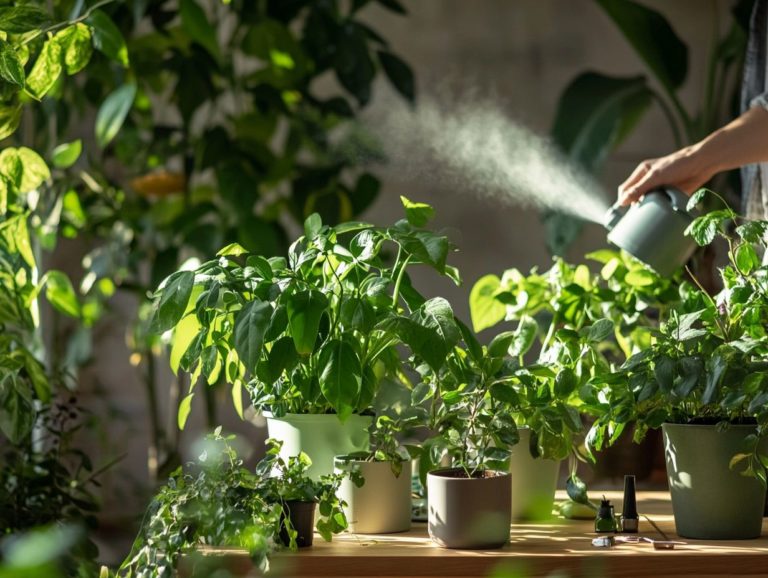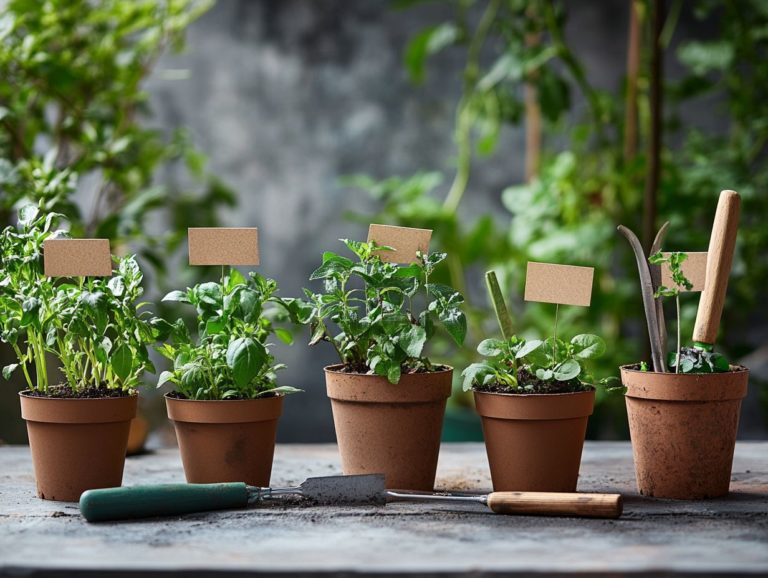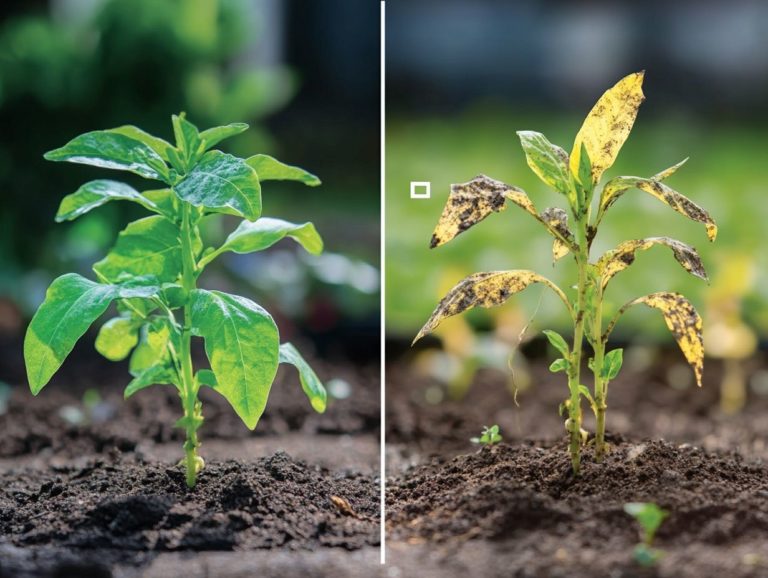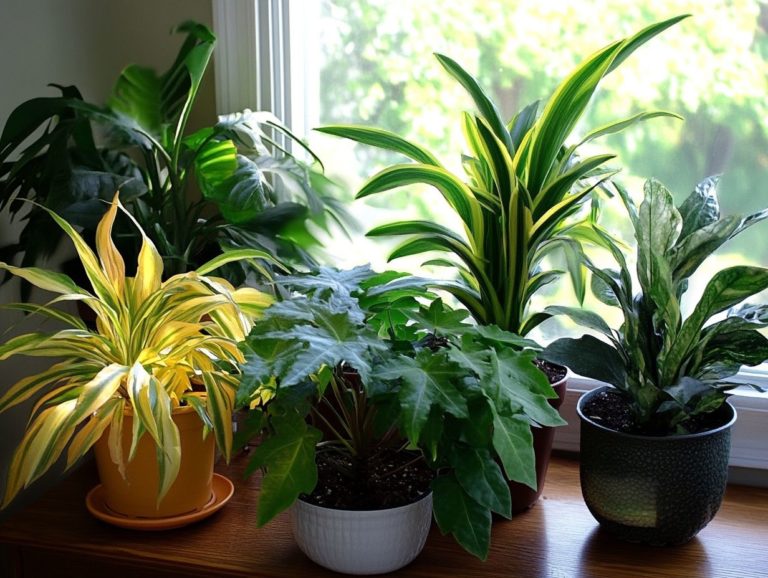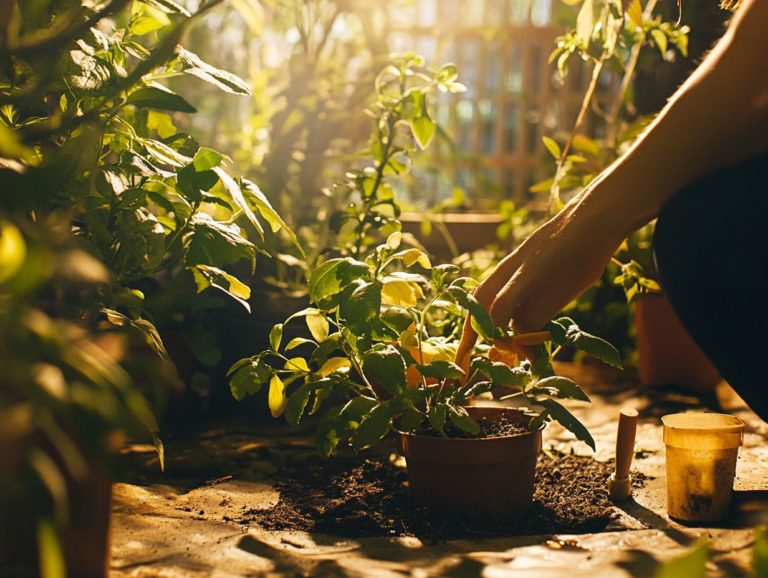How to Manage Seasonal Changes for Houseplants
Seasonal changes profoundly influence houseplants. They affect everything from their growth patterns to their fundamental care requirements.
By understanding how these variations impact your plants, you hold the key to maintaining their health and ensuring they thrive throughout the year.
This article serves as your guide to making essential adjustments in watering, fertilizing, lighting, and temperature management.
Delve into the best practices for pruning and repotting, allowing your houseplants to adapt seamlessly to each season.
Prepare to elevate your indoor garden to new heights!
Contents
- Key Takeaways:
- Understanding Seasonal Changes for Houseplants
- Adapting Watering and Fertilizing Schedule
- Light and Temperature Adjustments
- Pruning and Repotting for Seasonal Changes
- Frequently Asked Questions
- What are seasonal changes for houseplants and why is it important to manage them?
- How do I know when it’s time to adjust my houseplant’s care for seasonal changes?
- What type of adjustments should I make for seasonal changes?
- Can I keep my houseplants outside during seasonal changes?
- Do I need to repot my houseplants during seasonal changes?
- What else should I do to manage seasonal changes for my houseplants?
Key Takeaways:
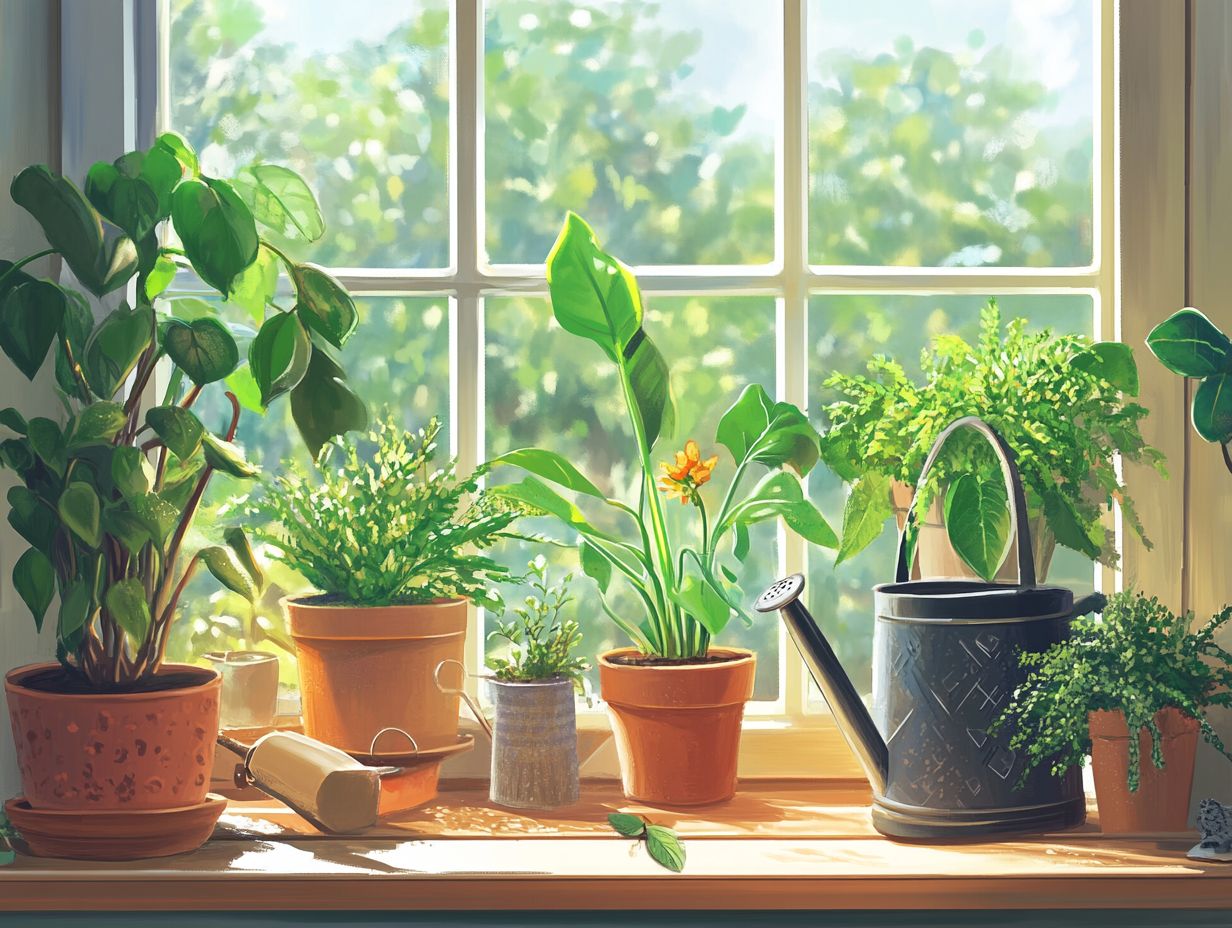
- Understand the effects of seasonal changes on your houseplants to manage them effectively.
- Adjust your watering and fertilizing schedule according to the changing seasons for healthy growth.
- Manage light and temperature fluctuations to provide optimal conditions for your houseplants.
Understanding Seasonal Changes for Houseplants
Understanding seasonal changes is essential for the health and vitality of your houseplants. As temperatures drop and daylight hours shorten in winter, you might face the challenge of creating the right environment for your indoor greenery.
During this time, factors like light intensity, humidity, and watering routines gain greater importance. You may notice shifts in your plants, such as leaf drop and slowed growth.
By recognizing how these seasonal changes affect plant care, you can keep your foliage vibrant and prevent common indoor gardening issues, ensuring your plants thrive all year round.
Effects of Seasonal Changes on Houseplants
Seasonal changes can have a profound impact on your houseplants, shaping their growth patterns, humidity requirements, and risk of pests.
As temperatures fluctuate and daylight hours shift, the environmental dynamics within your home can change dramatically. For example, during the winter months, the drop in humidity often leads to leaf drop and makes your plants more susceptible to pests like spider mites and aphids, which thrive in dry conditions.
In spring and summer, the abundance of bright light can supercharge growth but increases the risk of overexposure, resulting in sunburned leaves. To counter these challenges, it’s crucial to maintain a consistent humidity level consider using humidifiers or pebble trays.
Regularly inspect your plants for signs of pests and apply insecticidal soap, a natural product that helps manage pests without harming your plants, when needed. This will keep infestations at bay, ensuring your green companions thrive throughout the seasons.
Adapting Watering and Fertilizing Schedule
Adapting your watering and fertilizing schedule is crucial for maintaining optimal plant health as the seasons transition, especially in winter when indoor humidity levels and temperatures can fluctuate unpredictably.
As a dedicated plant parent, it s vital to be attentive to the specific needs of your houseplants. Adjust your watering frequency accordingly. This might mean using moisture meters to accurately gauge when it s time to water, ensuring your plants receive the right nutrients without the risk of overwatering.
Remember, different indoor plants have distinct requirements; for instance, drought-tolerant species may thrive with less frequent watering, while moisture-loving plants will need more attention during those colder months.
Changes in Watering Frequency

Changes in watering frequency are crucial for your indoor plants’ health.
As seasons change, understanding each plant’s watering needs can boost growth and vitality.
Succulents thrive on less water, while tropical plants prefer moisture-rich environments.
Using moisture meters helps eliminate guesswork and accurately gauge soil moisture levels.
This tool is vital when adjusting your watering schedule for seasonal changes.
Pay attention to pot size, soil type, and light exposure, as they greatly influence water needs.
Consider these factors to ensure your green companions receive the right amount of hydration.
Choosing the Right Fertilizer for Each Season
Choosing the right fertilizer for each season is essential for robust plant growth and ensuring your indoor garden thrives.
This involves understanding your plants’ specific needs and how seasonal changes affect nutrients in the soil.
In spring, opt for a balanced fertilizer rich in nitrogen to encourage lush, vibrant foliage.
As you transition into fall, focus on fertilizers high in phosphorus and potassium, crucial for fortifying root systems and preparing plants for dormancy.
Each type of fertilizer organic, slow-release, or liquid has unique advantages to help maintain optimal nutrient levels.
By adjusting your fertilization strategies based on plant health and environmental conditions, you can create a thriving garden.
Light and Temperature Adjustments
Light and temperature adjustments are vital for your houseplant care, especially during seasonal transitions.
As winter approaches, many indoor plants may not receive enough sunlight, leading to stunted growth and weakened health.
By managing light exposure and maintaining ideal temperatures, you can greatly enhance your plants’ vitality.
Shielding your plants from cold drafts while ensuring they get adequate warmth is crucial for preventing stress.
This helps foster lush, healthy foliage.
Understanding Light Needs for Different Seasons
Understanding your houseplants’ light needs shifts with the seasons, significantly impacting their overall health and growth.
As winter days grow shorter, many indoor plants may suffer from a lack of natural light, leading to stunted growth and yellowing leaves.
During the sunny days of summer, some species thrive in extra sunlight while others need shade to avoid leaf scorch.
To meet these varying light preferences, rotate your pots regularly and observe how your plants respond.
If natural light is insufficient, using grow lights can effectively mimic sunlight and deliver essential wavelengths for photosynthesis.
This way, you can maintain your indoor garden’s vitality, no matter the season.
Managing Temperature Fluctuations
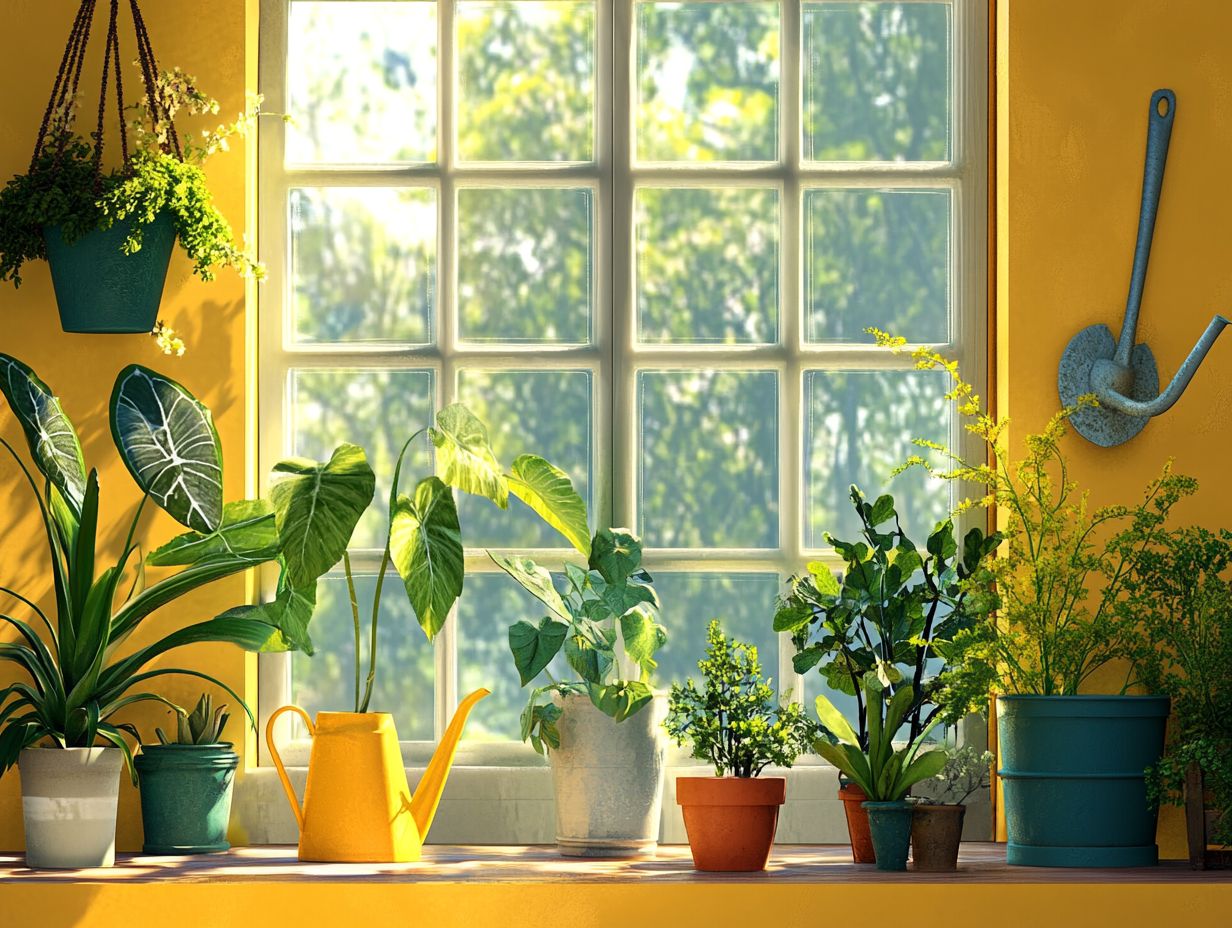
Managing temperature fluctuations is vital for ensuring your plants thrive, especially during seasonal shifts.
Extreme changes in temperature can put your plants under stress. This can lead to issues like wilting or sluggish growth. Keeping your plant’s environment just right is key! For instance, using thermostats (devices that help control temperature) can help maintain a stable temperature. Place your plants away from drafty windows and heat sources to protect those delicate leaves from cold drafts and warm air.
Maintaining proper humidity levels with a humidifier or pebble trays can create a more favorable environment for growth. By regularly monitoring these conditions, you can make necessary adjustments that greatly enhance your plants’ vitality, contributing to their overall well-being.
Pruning and Repotting for Seasonal Changes
Pruning and repotting are important tasks that deserve your attention, especially as the seasons shift. By tailoring these practices to the changing environment, you can ensure your houseplants thrive and achieve optimal growth.
During active growth periods, a well-timed pruning can shape your plants and promote lush, bushy foliage. Repotting provides the necessary space for healthier root development and replenishment of soil nutrients. Recognizing the right moments to prune or repot based on seasonal cues will significantly enhance the vitality of your indoor garden, preventing overcrowding and addressing any issues with unhealthy roots.
Trimming and Shaping Plants for Optimal Growth
Trimming and shaping your plants through pruning is essential for promoting optimal growth and maintaining healthy foliage.
By employing various pruning techniques, you can significantly enhance the vitality of your houseplants. Regular trimming not only encourages bushier growth but also improves air circulation, reducing the risk of disease and pest infestations. For instance, many tropical plants benefit from periodic snipping of their stems and leaves, allowing them to thrive in a compact form.
Succulents, on the other hand, might require careful removal of dead leaves to stimulate new growth and prevent rot.
Understanding the specific care tips for each plant type is crucial. This enables you to adopt tailored approaches that create an environment where your houseplants can truly flourish.
When and How to Repot for Seasonal Changes
Understanding when and how to repot your indoor plants is vital for their upkeep. This can greatly influence their growth trajectory.
Paying attention to the signs that indicate your plant needs repotting is key to ensuring its health. Here are some clear warning signs:
- Root overcrowding: Roots pushing through the drainage holes or curling tightly around the inside of the pot.
- Stunted growth: If your plant shows stunted growth or its leaves are yellowing, it may be a sign that the soil is running low on nutrients.
When the moment arrives to repot, choosing the right soil is crucial. Consider fast-draining options for succulents or nutrient-rich varieties (soil rich in essential plant nutrients) for tropical plants. Use a gentle technique to loosen the root ball; this minimizes stress and encourages robust growth as the plant settles into its new home.
Frequently Asked Questions
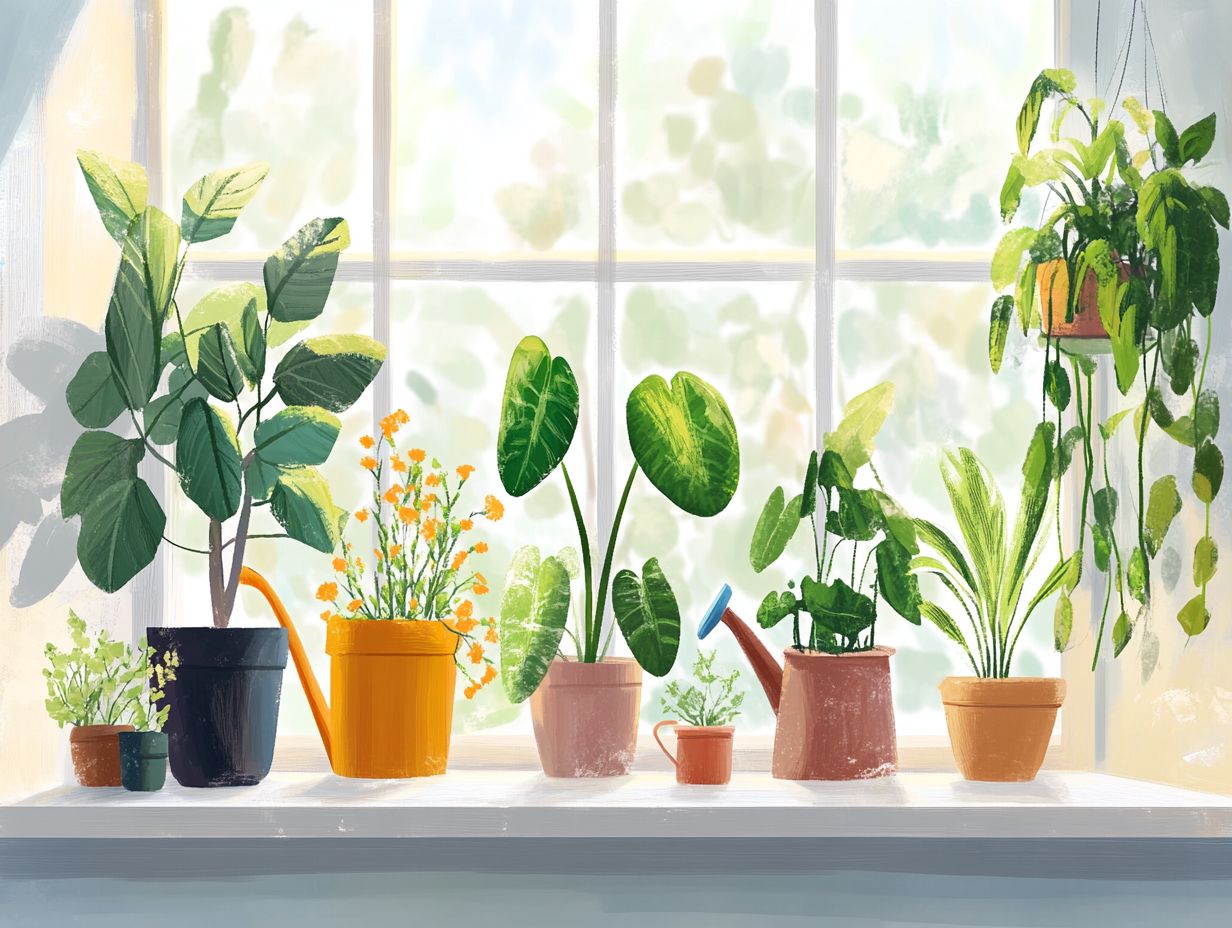
What are seasonal changes for houseplants and why is it important to manage them?
Seasonal changes refer to the natural fluctuations in temperature, humidity, and light levels that occur during different times of the year. It’s important to manage these changes for houseplants because they can greatly impact the health and growth of your plants.
How do I know when it’s time to adjust my houseplant’s care for seasonal changes?
The best way to determine when to adjust your houseplant’s care is by observing its behavior and appearance. Changes in leaf color, wilting, or slower growth may signal that the plant needs different care for the season.
Don’t wait for your plant to show signs of distress take action today! Start caring for your houseplants and watch them thrive!
What type of adjustments should I make for seasonal changes?
Adjustments for seasonal changes depend on your houseplant’s needs. You may need to change watering frequency, fertilizing schedule, or move your plant for better light and temperature.
Can I keep my houseplants outside during seasonal changes?
This depends on the plant and the seasonal conditions. Some houseplants thrive outdoors in certain seasons, while others can’t handle the temperature or humidity.
Do I need to repot my houseplants during seasonal changes?
Repotting isn’t always necessary. However, if your plant’s roots are too big for the pot, consider repotting during milder seasons.
What else should I do to manage seasonal changes for my houseplants?
Also, check for pests and diseases regularly. Changes in temperature and humidity can make plants more vulnerable to these issues. Act quickly to catch and treat them!

